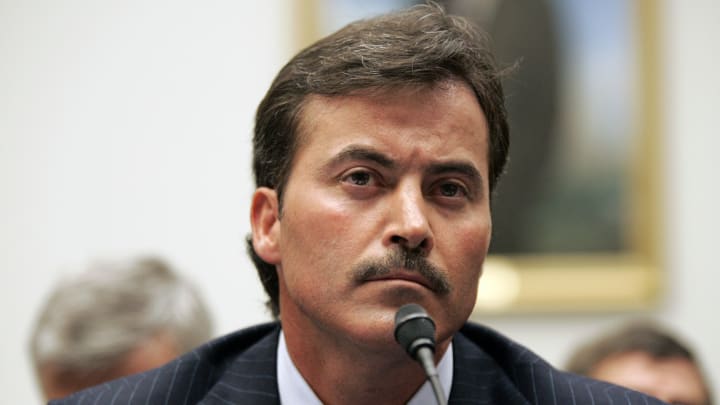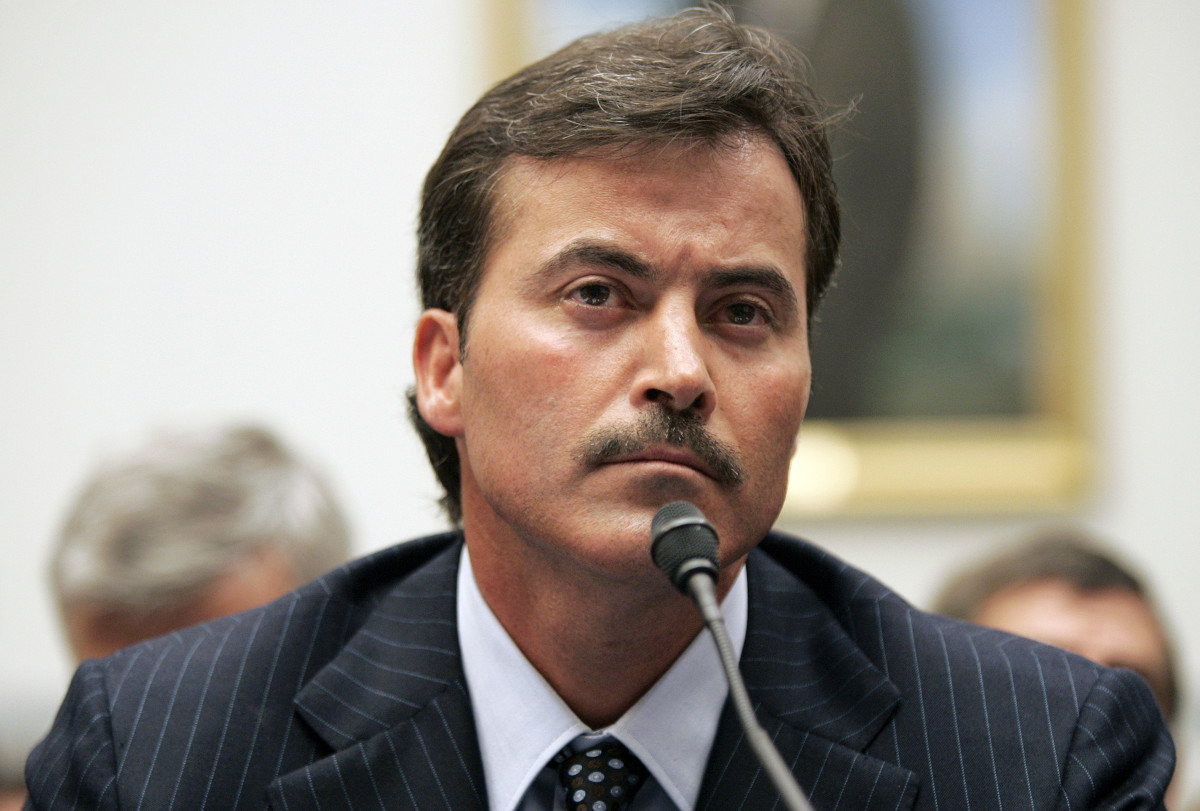A Timeline of Rafael Palmeiro’s Tumultuous Final Season

On Nov. 18, 2005, the Congressional Committee on Government Reform closed an investigation into whether testimony of Rafael Palmeiro eight months earlier should be referred to the Department of Justice for a potential perjury charge. The committee decided against referral. But in doing so, it unloaded one of the largest information dumps involving a steroid case in baseball.
The final report included details from Palmeiro’s arbitration hearing, polygraphs, drug tests, and interviews and correspondence with Palmeiro, his wife, players, team officials and drug experts. Palmeiro believes the source of the stanozolol in his body was a tainted B-12 shot, though he acknowledges he cannot prove it. Here is the timeline of the 2005 events, according to the government document.

March 17
Pointing his finger at committee members, Palmeiro testifies, “Let me start by telling you this: I have never used steroids, period. I do not know how to say it any more clearly than that. Never. The reference to me in Mr. [Jose] Canseco’s book is absolutely false.”
Mid-April
Orioles teammate Miguel Tejada offers Palmeiro a B-12 shot. Palmeiro says he regularly received B-12 shots as an energy boost from the Rangers‘ team physician when he played for Texas, but the Orioles did not administer the shots through team medical staff.
Tejada told the committee he took B-12 with him from the Dominican Republic when he traveled to the U.S. for the start of the season. He said he had only enough in 2004 for 12 injections. However, another teammate, identified by the committee only as “Player A,” said he injected Tejada “40–45 times” in ’04 and “30–35 times” in ’05 before stopping in July that year.
When Palmeiro took the B-12 vial and syringe home, he asked his wife, Lynn, to inject him. He told the committee she was familiar with injections because of allergy shots she gave the family dogs. He said this was the only occasion his wife injected him—the only occasion when he received a B-12 shot not from a medical professional.
May 4
As Palmeiro arrives at Camden Yards for a 3:09 p.m. game against the Blue Jays, he is informed he must provide a urine sample for drug testing.
Palmeiro is hitting .226 at the time with only one home run and four extra-base hits in 26 games. He needs 59 hits for 3,000.
A Washington, D.C., lab divides the urine sample into Sample A and Sample B. A screening and confirmatory test on Sample A are positive for stanozolol, an anabolic steroid, and two of its metabolites. A later, second confirmatory test on Sample B, done at Palmeiro’s request, also comes back positive for stanozolol.
May 19
MLBPA chief operating officer Gene Orza leaves a message for Palmeiro to call him before a game that night in Kansas City. When Palmeiro returns the call, Orza informs him he tested positive for stanozolol. After the game, Palmeiro calls MLBPA chief Michael Weiner. Palmeiro tells him he does not know how the positive result could be possible. Days later, he tells Weiner and Orza about the B-12 shot.
May 25
Weiner notifies the Health Policy Advisory Committee that Palmeiro challenges the test result.
May 27
Palmeiro provides another urine sample to the lab. It is negative for all banned substances.
June 13
Palmeiro arranges to take a polygraph test, the results of which are submitted to the arbitration panel and later turned over to the committee. The polygraph service wrote that he “passed” the test. But the committee noted an obvious omission from the six fairly obtuse questions posed to him: Why, they asked him, did the service never ask him the obvious question: “Did you knowingly take steroids?”
“I’m not sure. I did not set it up,” he said.
June 16
Palmeiro’s arbitration appeal hearing begins. Over-the-counter supplements Palmeiro used are tested and found not to be contaminated.
Weiner testifies that another B-12 vial in Tejada’s possession was tested. It contained no steroids or precursors.
Palmeiro testifies, “I have never taken steroids in my life.” Asked how stanozolol entered his body, he testifies that he has “no idea” and “no explanation.”
July 14
Closing arguments are held.
For a player to successfully overturn a positive test result, he must meet the burden of proof “to provide objective evidence in support of his denial.” Denial itself is not enough.
In reviewing hearing transcripts, the committee noted, “The Players Association did not argue the substance in the B-12 vial taken by Mr. Palmeiro resulted in his positive test result. In fact, Mr. Weiner argued just the opposite, stating in closing arguments, ‘The Players Association does not contend that the B-12 shot that Mr. Palmeiro took caused his positive test result. We have no evidence to suggest that. As a matter of fact, all of the evidence that exists runs in the other direction.’”
July 15
Palmeiro records career hit number 3,000, a double in Seattle.
August 1
The arbitration panel denies Palmeiro’s appeal. It finds “the evidence in this record is not sufficient for the Player to meet his burden of proof.” Palmeiro is suspended 10 days. The committee opens an investigation into whether Palmeiro committed perjury in his March 17 testimony.
August 25
Palmeiro is interviewed by committee staff. He stands by his March 17 testimony.
August 30
Palmeiro is treated so rudely by fans in Toronto that he plays with his ears covered. He goes 0-for-4. It is the last game of his career.
October 28
Responding to a request from the committee, the attorney for Canseco wrote in a letter, “regarding use by Rafeal [sic] Palmeiro, Mr. Canseco stands behind the statements in his book. ...”
November 18
The committee decides not to make a perjury referral. According to testimony it obtained from a drug testing expert, injectable stanozolol is detectable up to three or four weeks from use. Oral form is detectable seven to 10 days. Palmeiro’s only test was May 4, seven weeks after the March 17 hearing.
The committee wrote, “This makes it likely that the consumption of stanozolol that resulted in Mr. Palmeiro’s positive test occurred after his testimony to the Committee.”
More MLB Coverage:
• Rafael Palmeiro Opens Up About His Steroid-Tainted Legacy
• Astros Owner’s Carelessness Reflected in Insulting Contract Offers
• Ranking MLB’s Top 50 Free Agents, With Signing Predictions
• The 2022 World Series Is a Lesson for the Rest of Baseball
